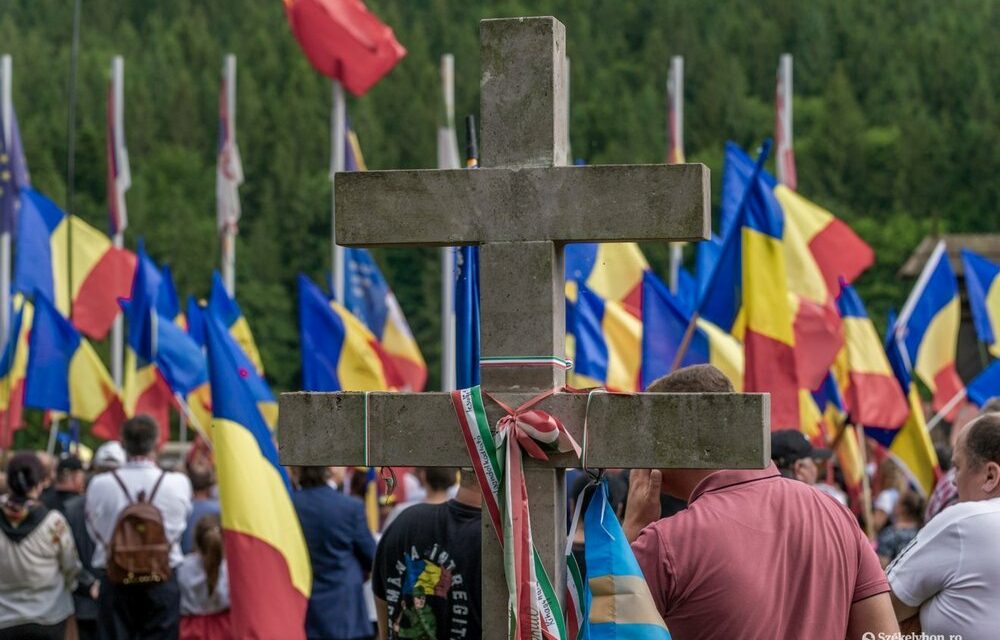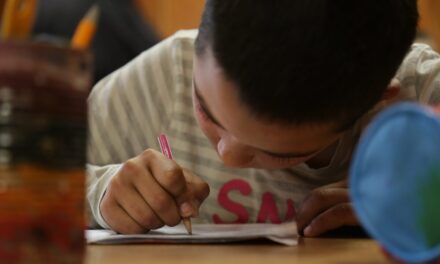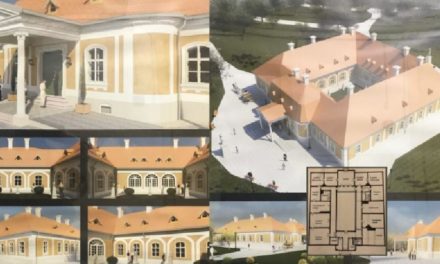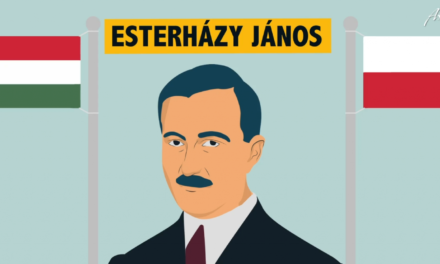The bilingual (Hungarian and Romanian) informative inscriptions printed on a large sheet of paper were covered by Romanian nationalists who flocked to the Úzvölgy military cemetery on the occasion of Heroes' Day, claiming that they would no longer tolerate "foreign symbols", the Szekelyhon.ro news portal and Nemzet wrote on Friday . Útja (Calea Neamului) association and the Association for the Unification of Romanians (AUR) in their photo coverage of the previous day's commemoration.
At the call of the two organizations, hundreds of Romanian protesters, mostly dressed in national costumes and waving Romanian national flags, marched to the military cemetery in the depopulated Úzvölgye settlement part of Székelyföld on Thursday to "protect" the concrete crosses that were arbitrarily erected there three years ago, but were ordered to be removed by a recent court decision.
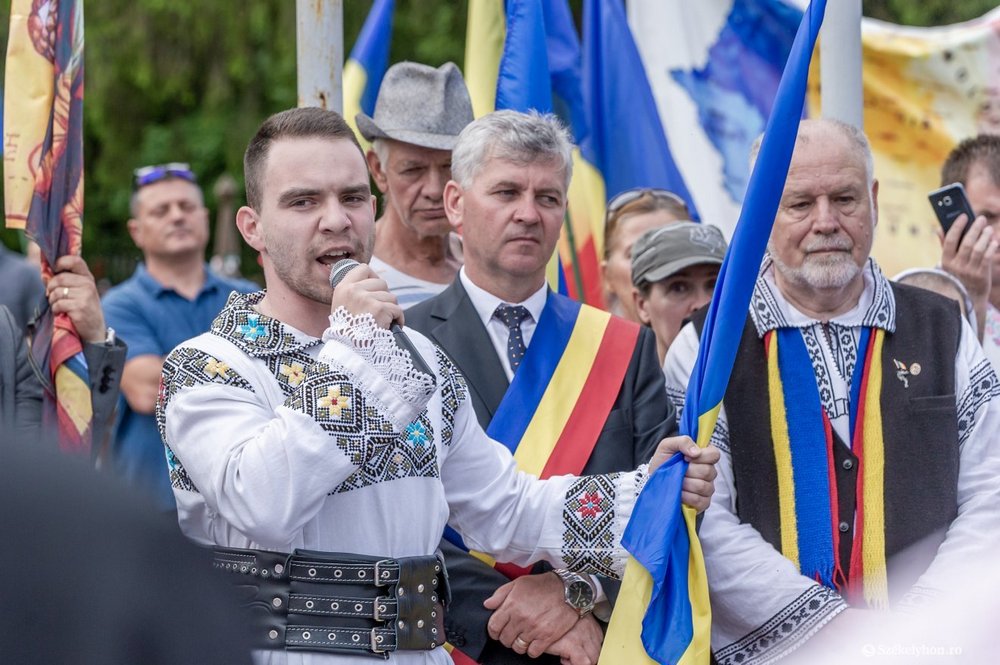
Photo: Szekelyhon.ro / Attila Pinti
Before the Orthodox ceremony held in the cemetery and the speeches of the public figures, Mihai Tirnoveanu , head of the National Road association, covered the stone wall of the memorial site with a poster in the Romanian national color.
"Since 2019, we have come here every year and every time we have seen that our Orthodox priests have foreign symbols behind their backs. The symbols of those who broke our bones, hanged us, burned us, who destroyed the Romanian churches with pickaxes, but today we can no longer tolerate these symbols. We will not destroy them, as they did with our holy churches, but we will cover them with the Romanian tricolor"
- quoted Tirnoveanu in Székelyhon, adding: amidst the ensuing storm of applause and the singing of the Romanian national anthem, the gathered people tied ribbons in Romanian national colors at the entrance to the military cemetery, at the Székely gate.
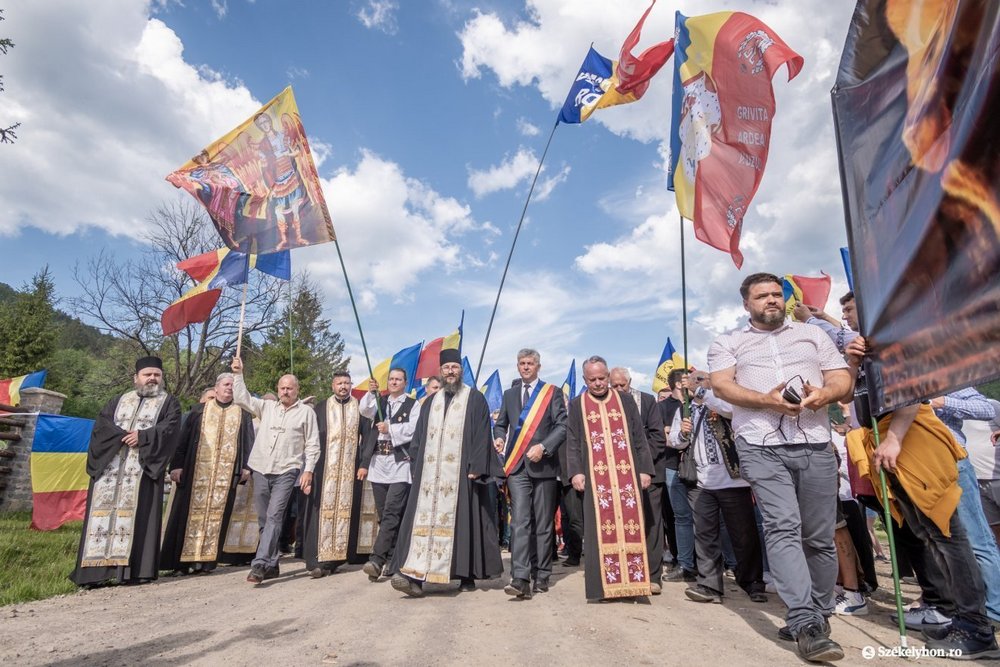
Photo: Szekelyhon.ro / Attila Pinti
At the commemoration, the list of Romanian heroes, whose remains they believe rest in the Úzvölgy cemetery, was read again, and the participants shouted "Present!" they responded with an exclamation to the names read out.
Member of Parliament George Simion, the president of AUR, which is considered extremist by other parliamentary parties, assessed as a success that in recent years "they were able to take back the objects occupied by irredentists and sovens", among other things, the military cemetery in Úzvölgy . He announced: next week, the AUR will initiate the transfer of the military cemetery to the Ministry of Defense in Bucharest, and thus to the Romanian state.
Constantin Toma, the mayor of the Moldovan village of Darmanesti, who in 2019 arbitrarily created a "Romanian plot" in the Úzvölgy cemetery, considered by the people of Csíkszentmárton, as a military cemetery, and erected fifty concrete crosses to the Romanian heroes who are said to be buried there, said that they do not need to ask permission from anyone in order to to pay tribute to the memory of heroes and consider it unacceptable that some people think their crosses should be destroyed.
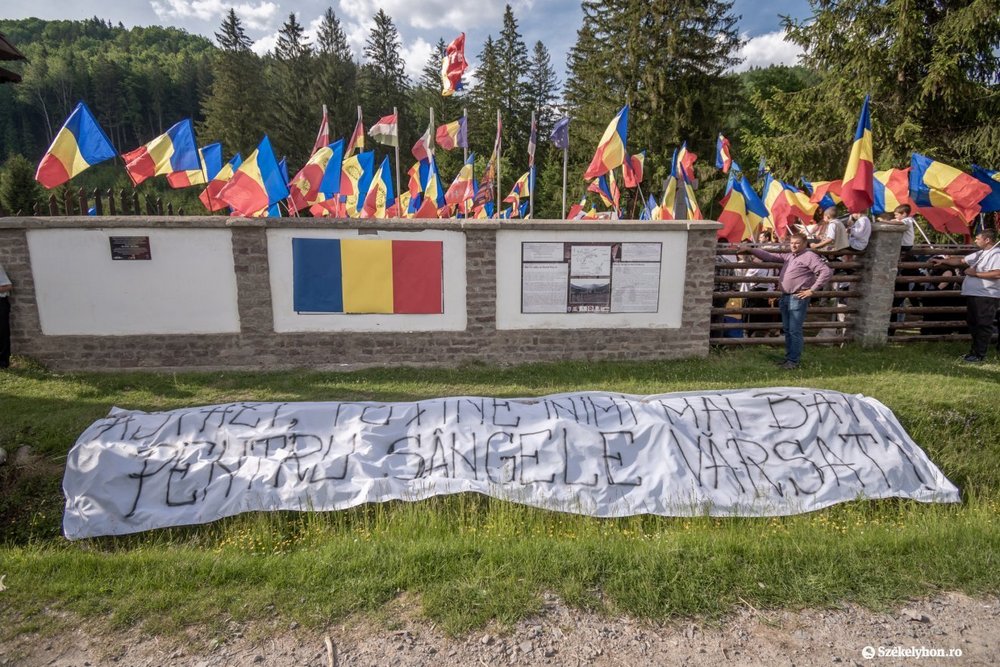
Photo: Szekelyhon.ro / Attila Pinti
The military cemetery in Úzvölgy became the site of the Romanian-Hungarian conflict three years ago. In 2019, on Romanian Heroes' Day, thousands of Romanian commemorators forced their way into the cemetery to take part in the Romanian Orthodox consecration of the Romanian plot and monument, which hundreds of Szeklers unsuccessfully tried to prevent with a live chain at the request of the Székelyföld municipalities.
In its summary published on June 12, 2019, the National Heroes' Memorial Office (ONCE), subordinate to the Romanian Ministry of Defense, clarified that the Romanian soldiers whose names are regularly read out at commemorations of Romanian nationalists were not buried in Úzvölgy. Countless lawsuits are pending in the Romanian courts regarding the now depopulated Úzvölgye settlement belonging to Csíkszentmárton, the military cemetery and barracks located on its territory, as well as the Romanian plot created in the military cemetery.
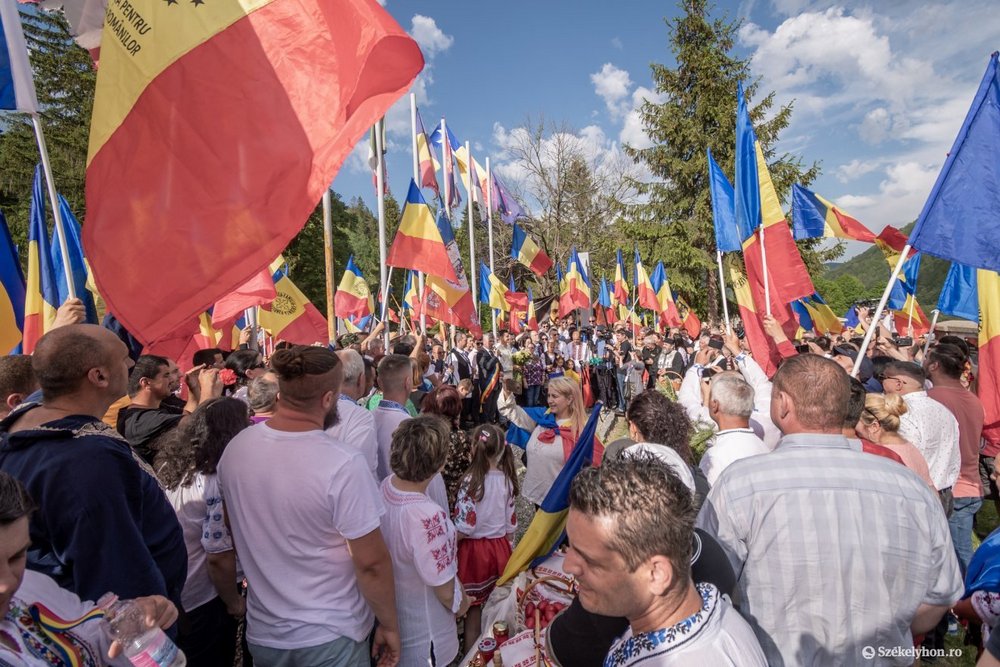
Photo: Szekelyhon.ro / Attila Pinti
In its February judgment, the Bákó County Court invalidated the construction permit for the Romanian plot of the Úzvölgy military cemetery and ordered the demolition of the illegal structure.
MTI
Photos: Szekelyhon.ro / Attila Pinti

